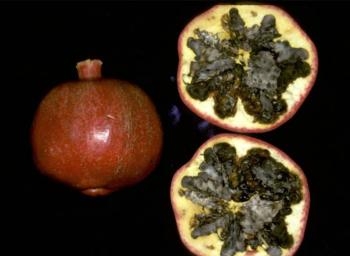From the UC Blogosphere...
Behold the White-Lined Sphinx Moth
Our cat used to catch them. She'd bring them into the house and watch them flutter at our feet. The white-lined...
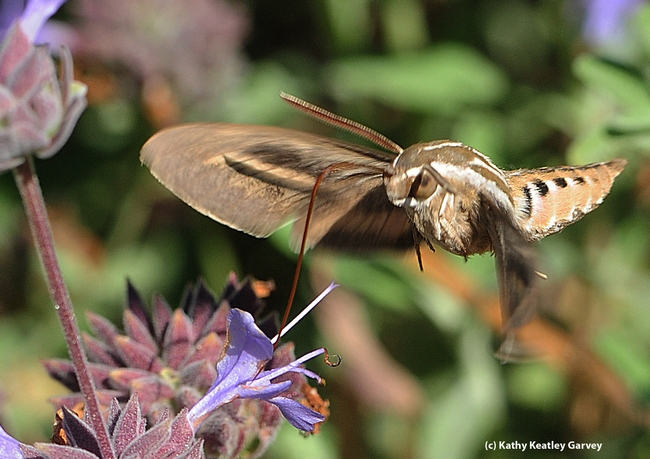
White-lined sphinx moth in flight. (Photo by Kathy Keatley Garvey)
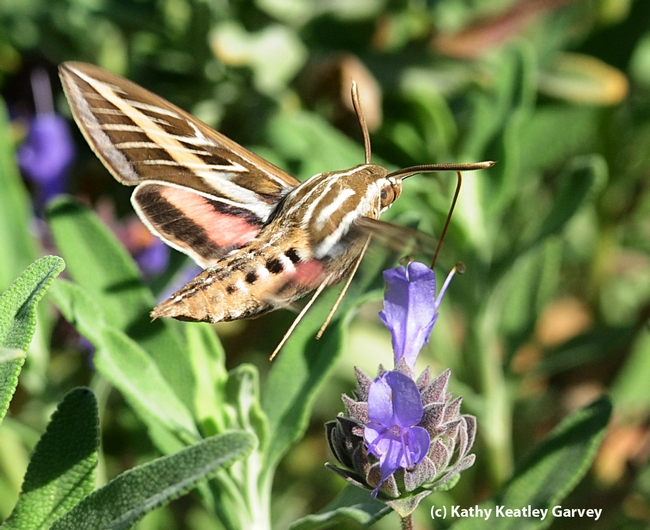
White-lined sphinx moth heads for salvia (sage). (Photo by Kathy Keatley Garvey)
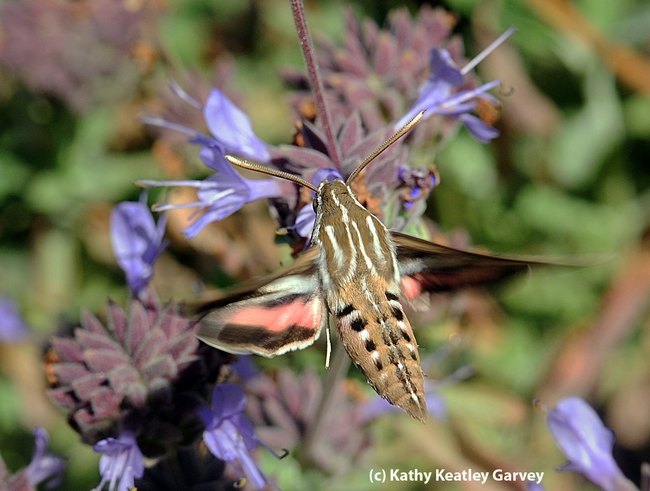
View from above of the white-lined sphinx moth. (Photo by Kathy Keatley Garvey)
Seeing Red
It's easily missed because it's only a fraction of an inch long. But the color--a brilliant red--is right there. It's a...
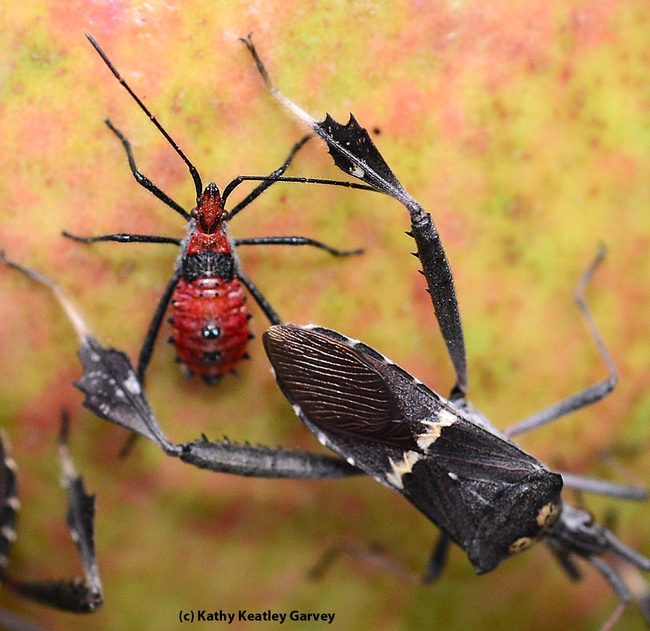
Red nymph of leaffooted bug, Leptoglossus zonatus. (Photo by Kathy Keatley Garvey)
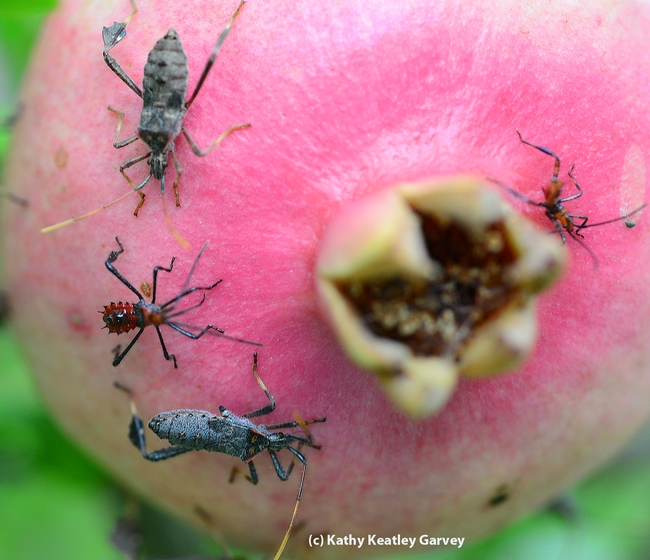
Leaffooted bugs, adults and nymphs, share a pomegranate. (Photo by Kathy Keatley Garvey)
Eureka! A Western Bumble Bee
Many of us in California have never seen the Western bumble bee (Bombus occidentalis) Many of us never will. Native...
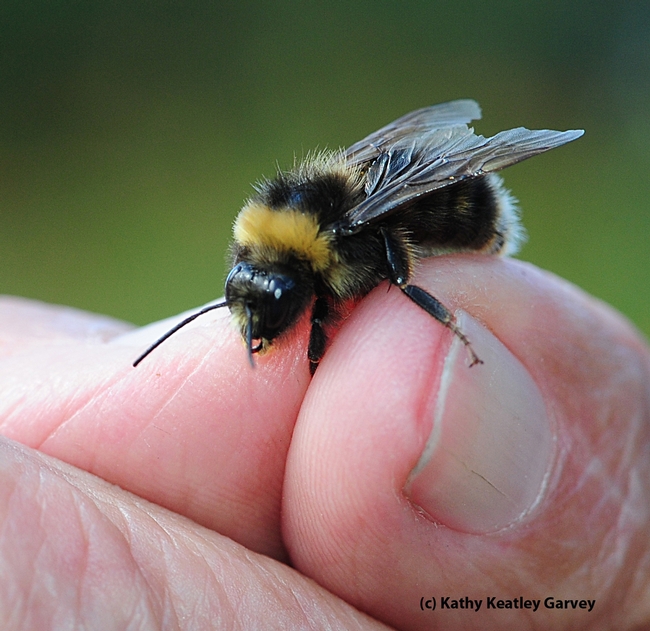
Close-up of a male Western bumble bee (Bombus occidentalis) found Aug. 15 at Mt. Shasta. (Photo by Kathy Keatley Garvey)
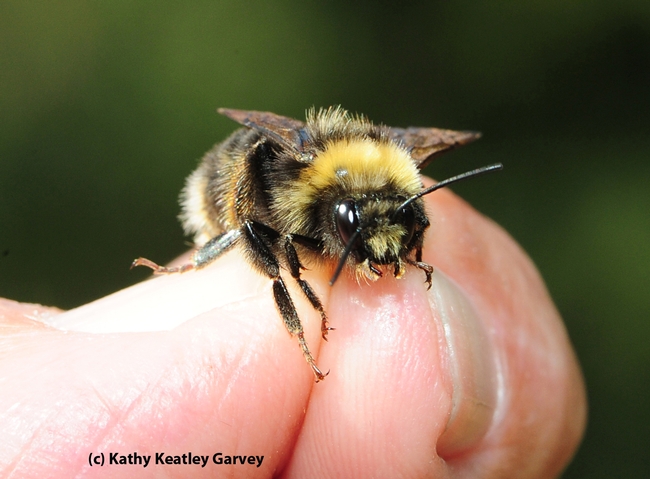
Another view of the male Western bumble bee found on Mt. Shasta. (Photo by Kathy Keatley Garvey)
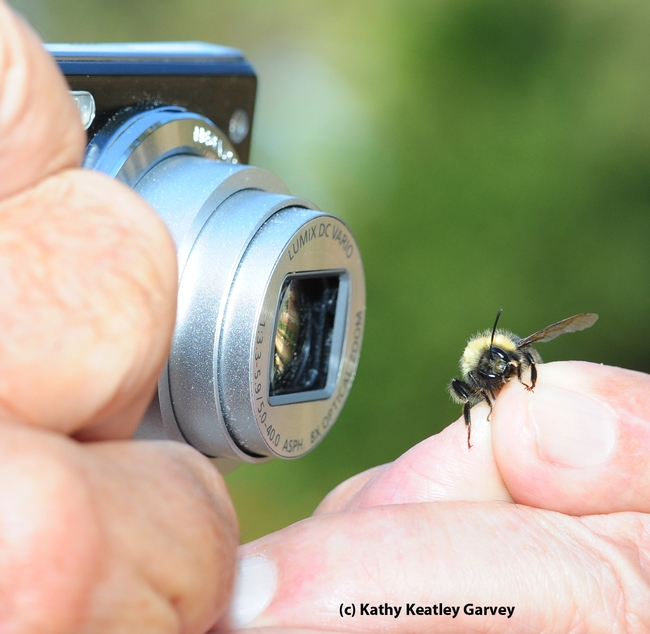
Documenting the rare find. (Photo by Kathy Keatley Garvey)
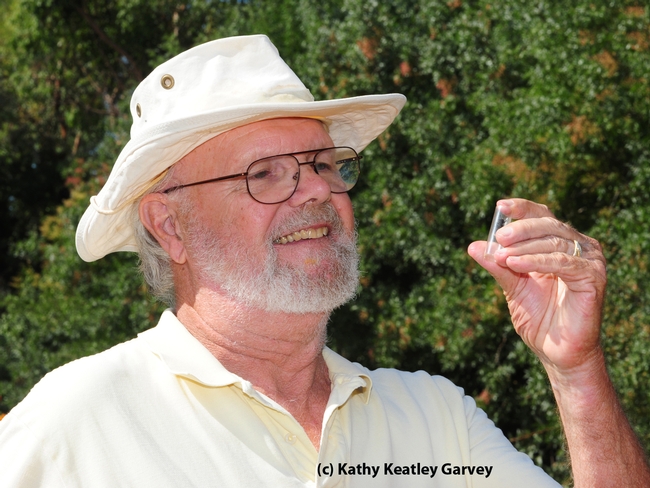
Native pollinator specialist Robbin Thorp is a retired UC Davis professor, but continues his full-time research. (Photo by Kathy Keatley Garvey)
UC scientists studying 'baffling' pomegranate ailment
A mysterious sudden crippling or death of pomegranate trees may be due to cold temperatures, said a story in Western Farm Press.
Three farmers and Themis Michiliades, UC Davis plant pathologist based at the UC Kearney Agricultural Research and Extension Center, agreed that low temperatures have a lot to do with the problem. Michailides cited an Iranian research paper that showed similar cold snap damage. Michailides and Richard Molinar, UC Cooperative Extension farm advisor in Fresno County, said damage from dieback this year was more common in sandier soils, perhaps because heavier soils hold moisture.
Writer Dennis Pollock reported on the problem in his article about a recent pomegranate field day at Kearney. At the field day, Michailides also reported on "black heart" of pomegranate, caused by Altenaria fungus, and cankers caused by species that include Neofusicoccum mediterraneum.
Claude Phené, a retired USDA-ARS researcher, discussed a two-year-old pomegranate irrigation and fertigation trial at Kearney.
Turning Over a New Leaf (Footed Bug)
When you first see the leaffooted bug, you know immediately how it got its name. The appendages on its feet look like...

Close-up of leaffooted bug. (Photo by Kathy Keatley Garvey)
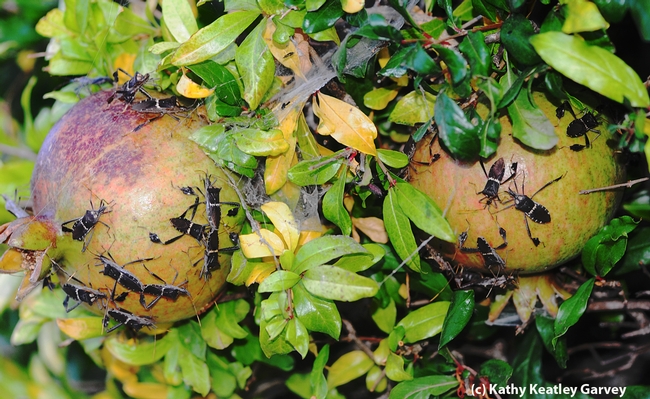
Leaffooted bugs making pomegranates their kitchen, living room and bedroom. (Photo by Kathy Keatley Garvey)
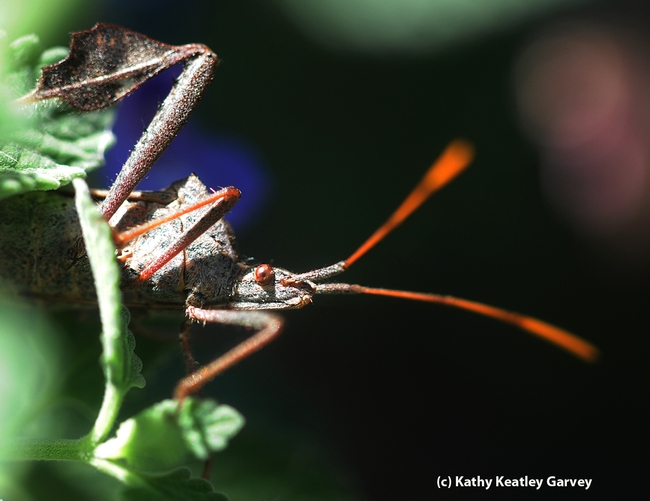
Beady eyes, colorful antennae and appendages on its feet that look like leaves. (Photo by Kathy Keatley Garvey)



